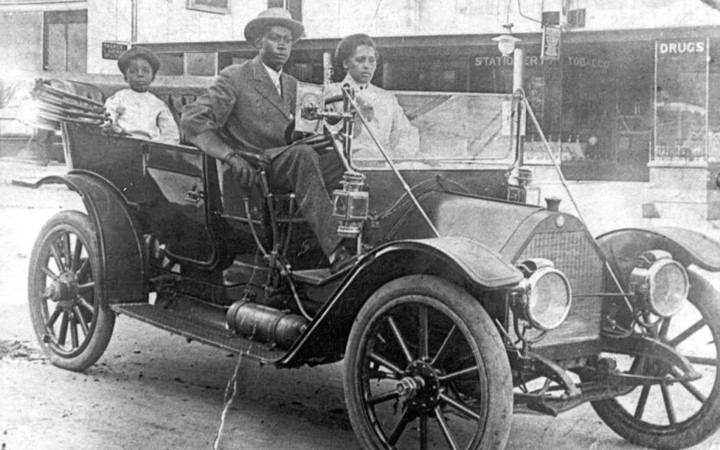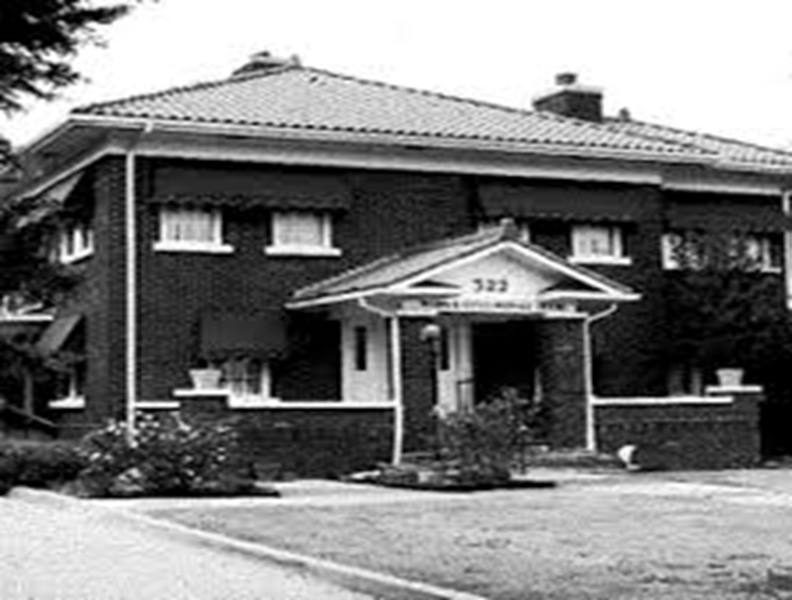
By May 30, 1921, Black Tulsans had built their own “Wall Street”—a vibrant, peaceful, and extraordinarily prosperous community located in the neighborhood district known as Greenwood. 



the Greenwood neighborhood was home to more than 10,000 African Americans as well as hundreds of thriving Black-owned businesses and organizations. Running north out of the downtown commercial district and shaped, more or less, like an elongated jigsaw
puzzle piece, Greenwood was bordered by the Frisco railroad yards to the south, by Lansing Street and the Midland Valley tracks to the east, and by Stand Pipe and Sunset Hills to the west. Greenwood was bordered by the Frisco railroad yards to the south, by Lansing Street and the
Midland Valley tracks to the east, and by Stand Pipe and Sunset Hills to the west. Greenwood was unlike any other Black community in the country. Its founders and residents had successfully created an affluent, self-sufficient, and flourishing community. 

Much of the land and the structures in Greenwood were owned by Greenwood residents. Black people from around the country visited Greenwood to witness and enjoy its prosperity. 

For example, the multi-millionaire community leader Attorney J.B. Stradford, the wealthiest man in Greenwood, built the Stradford Hotel which was known as the largest and finest African American owned hotel in the United States. 



Community leader Attorney A.J. Smitherman published the nationally influential Black-owned newspaper, the Tulsa Star, and served as the President of the Western Negro Press Association, the purpose of which was to represent Black newspaper publishers west of the Mississippi. 

Famous for its social cohesion & economic strength, Greenwood became known throughout the United States as “Black Wall Street.” The community had two black schools, a black hospital, and two black newspapers thirteen churches and three fraternal lodges plus two black theaters. 

Along Detroit Avenue & certain other streets were the neat, sturdy homes of some of those black Tulsans who owned business lining Greenwood Avenue, augmented by the houses of the city’s black professional class. Within this elite group were many what assets in excess of $100,000. 

The great Dr. W.E.B. Du Bois once said of Greenwood, “I have never seen a colored community so highly organized as that of Tulsa.” Greenwood residents had everything they needed within the geographic boundaries of their community. 

Indeed, “Black Wall Street” was so economically self-sufficient that purportedly every dollar that came through it circulated through the community fifty times, and it sometimes took a full year for currency to leave the community
All of that changed on May 31, 1921, when a mob of 2,000 white Tulsans, City of Tulsa officials and officers among them, pillaged and destroyed the entire Greenwood community during the deadliest and most devastating race massacre in the history of the United States. 

By sunrise on June 1, 1921, the once prosperous 36-block Greenwood community lay utterly destroyed. In what is now known as the Tulsa Race Massacre. Scores of successful businesses were lost. Estimates of the total property damage have amounted to between $50M-$100M. 

Worse, hundreds or even thousands died. Thousands more were injured. Still, more were left homeless—many forced to flee their hometown and never look back. Some were simply never heard from again. 

And those who managed to avoid physical injury were still left destitute and forever traumatized by the horror of what they had experienced and witnessed —a burden they and their descendants would carry for generations.#JusticeForGreenwood 

Although the Black residents of Greenwood were the innocent victims, in the Massacre’s immediate aftermath, the @cityoftulsagov and @tulsachamber falsely blamed survivors for the violence and destruction that annihilated their community. 

Approximately 6,000 of them were forcefully detained in CONCENTRATION CAMPS guarded by armed White men and forced to work as slaves for the @cityoftulsagov and @tulsachamber cleaning up their destroyed community. @limacake @KristiEaton @millerej_11 

The Black victims illegally held at the concentration camps were forced to wear dehumanizing green passes, and could only leave if a White person signed them out and agreed to be personally responsible for them. This literally badge of slavery was paid for by the @TulsaChamber 

Rather than attempt to mitigate the effects of the Massacre, @cityoftulsagov @TulsaCounty and @tulsachamber leaders sought to capitalize on the Greenwood community’s losses they caused by making every effort to prevent the reconstruction of Black Wall Street almost impossible. 

Worse many of the surviving Greenwood residents had to live in tents for up to 18 months while the perpetuators of the violence refused funds and resources sent from around the country to help the Black victims. @karenhunter 

In spite of all efforts to prevent it, some of the most lucky residents of Greenwood were eventually able to rebuild. But neither Greenwood nor its residents ever achieved the levels of success and prosperity they once enjoyed. #JusticeForGreenwood 

The Massacre had robbed them not only of their homes, businesses, and loved ones, but also of their money in savings, and, in turn, their power. In the following decades, the lack of resources and power that resulted from the Massacre deprived Black Tulsans of the ability to 

effectively stand up to and resist political actions that further threatened their livelihoods, health, safety, and welfare. As a result, Jim Crow segregation laws, urban renewal efforts and capital and infrastructure improvement projects that only really served white Tulsans 

Plus just 2 years after the Massacre the @cityoftulsagov allowed the KKK to build the largest KKK building, Beno Hall, in the nation. Almost every White elected and business leader in Tulsa were open & proud members of the KKK including many of the leadership of the @TulsaChamber 

For years the Klan routinely held huge rallies and marches under @cityoftulsagov protection right next to the Greenwood community. 

In fact, all five of the men who incorporated the Tulsa KKK in January 1922 were prominent leaders of the City, County, and Chamber. Just two months later in March 1922, Greenwood resident John Smitherman, brother of exiled Greenwood leader A.J. Smitherman, was kidnapped,
beaten, and mutilated by the Tulsa KKK. John Smitherman’s “crime” was registering Greenwood residents to vote. To this day no one was charged or arrested for the attack on John Smitherman, no restitution paid, and no apology provided to the family @eji_org @ZinnEdProject
• • •
Missing some Tweet in this thread? You can try to
force a refresh


